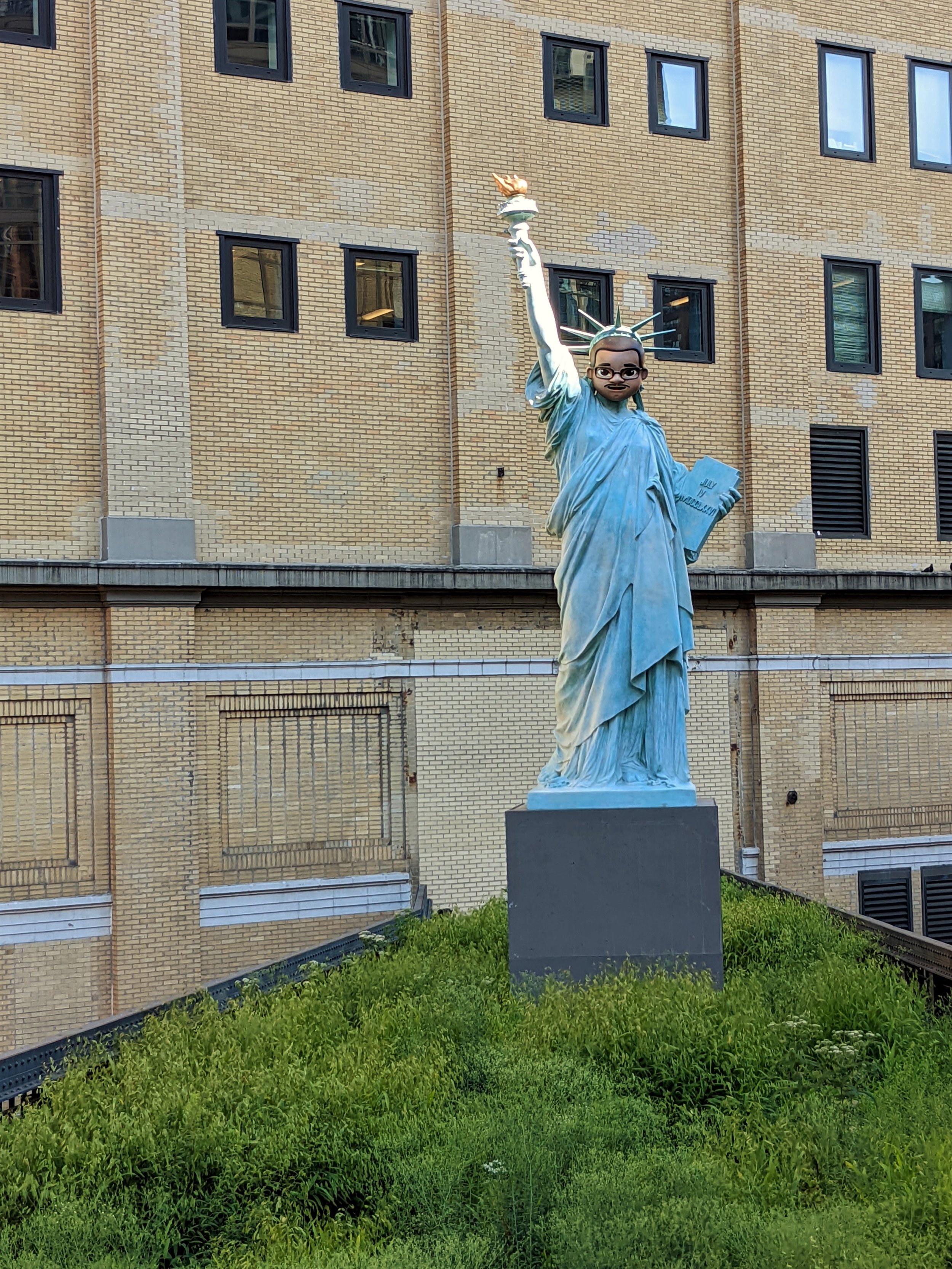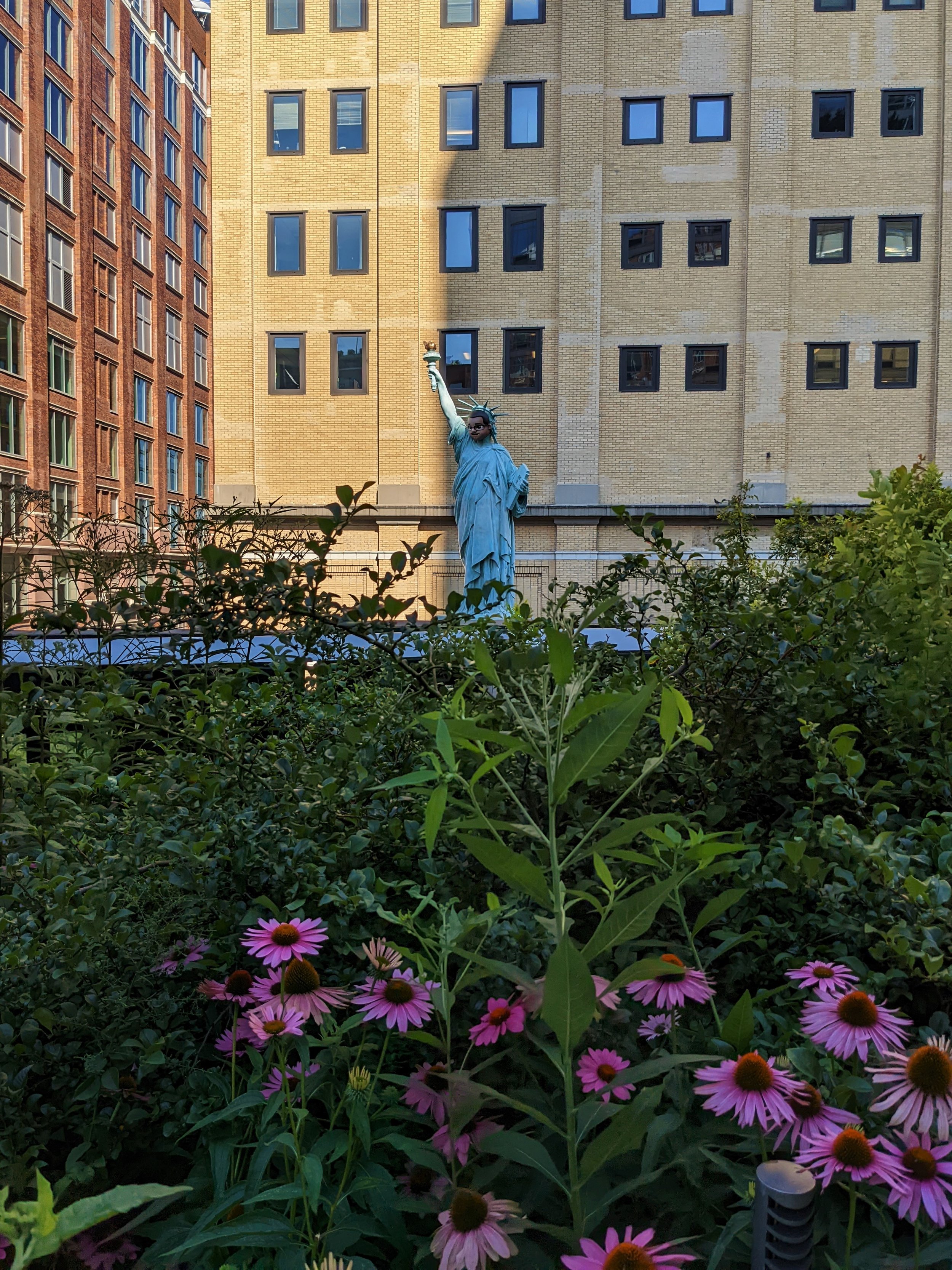Along the High Line at 24th Street sits—or rather, spins—a new sculpture by New York-based artist Meriem Bennani. “Windy”, a spinning sculpture in the shape of a tornado and made of black foam, plays with traditions of public sculpture, as well as with what visuals and motions constitute the increasingly fast pace of life in New York City. The 9-foot-tall sculpture, on display until next May, is in non-stop motion powered by electrical bike motors, built to both withstand and interact with all four seasons of New York weather. The piece, which marks Benanni’s first public sculpture and her most abstract work to date, exists as an homage to the dynamism and constant movement of the city and the High Line specifically, capturing in art the urban energy of the place we call home. The frantic and perpetual motion of the sculpture “captures the experience of walking through New York City’s crowded streets and the frequency of movement on the High Line, one of the city’s most visited public parks. “Windy” is a poignant visual of New York City’s frenzied and intoxicating energy”.
"You Know Who I Am" by Paola Pivi


The Statue of Liberty stands in New York Harbor and has welcomed people to New York since 1886. For decades, immigrants processed through Ellis Island saw the enormous copper statue upon arriving at US shores. Though Ellis Island no longer processes arrivals to the US, the statue remains an iconic symbol of freedom and welcome. In a new work called “You Know Who I Am,” on view on the High Line in New York City, artist Paola Pivi has repurposed the image of the statue to reflect on those ideas of freedom and welcome in the US today. She created a smaller-scale replica of the Statue of Liberty and added a series of emoji-style masks, each representing “an individual whose experience of freedom is connected to the United States, offering the sentiment that anyone could be represented within the symbol of the statue.” Currently, the mask portrays Marco Saavedra, “an artist, poet, restauranteur, longtime immigrant rights activist, and community organizer based in the South Bronx.” After many years of activism and organizing, Saavedra set a legal precedent for undocumented activists when he was granted political asylum in 2021. The image of his face on the iconic statue puts the history of American immigration in conversation with the modern immigration landscape.
Listen to an interview with Mr. Saavedra here.

